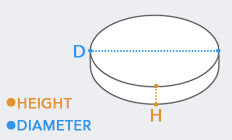Review
These are working well on the hat hangers for vehicles and popular with the public.
AMF Magnetics
Hi there,
That's fantastic to hear! We're delighted these 20mm x 2mm neodymium disc magnets are working so well for your hat hangers and that they're proving popular with the public. What a clever application - the slim 2mm profile combined with the strong N42 neodymium magnetism really does make these perfect for vehicle accessories where you need reliable holding power without bulk.
Thank you for the fantastic 5-star review and for choosing AMF Magnetics!










